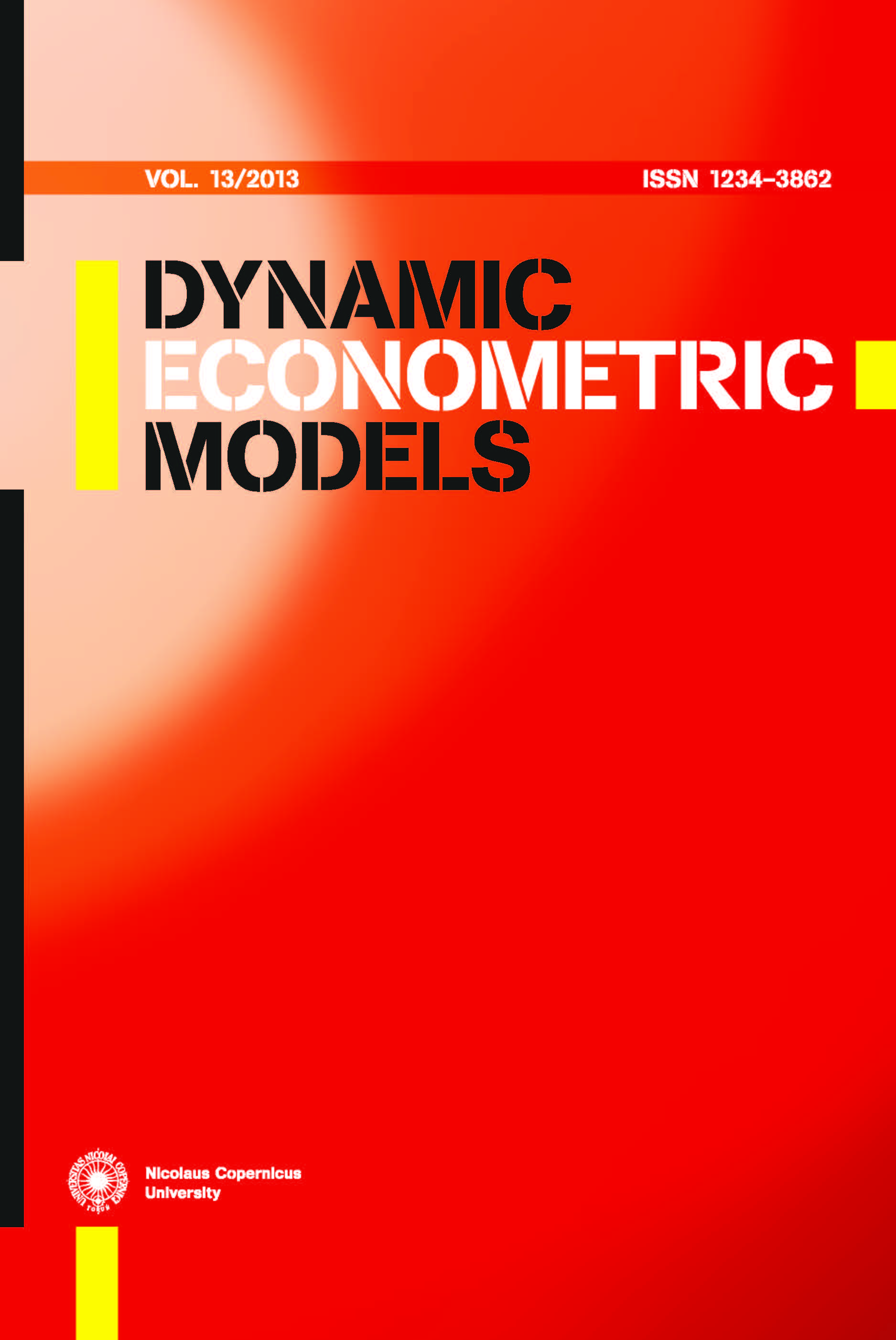Decomposing the Gender Gap in Average Exit Rate from Unemployment
DOI:
https://doi.org/10.12775/DEM.2013.009Keywords
duration of unemployment, parametric hazard models, gender gap, Oaxaca- Blinder decompositionAbstract
In the paper, we analyse the exit rates from unemployment, taking into account gender differences. The process of leaving the unemployment state was examined for each sex separately using the parametric hazard models. The objective was to present a decomposition of inequalities between men and women when leaving unemployment. The application of the modified Oaxaca-Blinder decomposition technique allowed us to isolate the factors explaining the observed inequalities. We found, that the gender gap is explained almost exclusively by differences in the effects of men’s and women’s characteristics.
References
Altonji, J. G., Blank, R. M. (1999), Race and Gender in the Labor Market, in Ashenfelter, O., Card, D. (eds.), Handbook of Labor Economics, Volume III, North-Holland, Amster-dam, DOI: http://dx.doi.org/10.1016/S1573-4463(99)30039-0.
Beblo, M., Beninger, D., Heinze, A., Laisney, F. (2003), Methodological Issues Related to the Analysis of Gender Gaps in Employment, Earnings and Career Progression, European Commission.
Blinder, A. S. (1973), Wage Discrimination: Reduced Form and Structural Estimates, Journal of Human Resources, 8(4), 436–455, http://dx.doi.org/10.2307/144855.
Edin, P. A. (1989), Unemployment Duration and Competing Risks: Evidence from Sweden, Scandinavian Journal of Economics, 91(4), 639–653, DOI: http://dx.doi.org/10.2307/3440211.
Gonzalo, M. T., Saarela, J. (2000), Gender Differences in Exit Rates from Unemployment: Evidence from a Local Finnish Labour Market, Finnish Economic Papers, 13(2), 129–139.
Jensen, P., Westergård-Nielsen, N. (1990), Temporary Layoffs, in Hartog, J., Ridder, G., Theeuwes, J. (eds.), Panel Data and Labour Market Studies, North-Holland, Amster-dam.
Kalbfleisch, J., Prentice, R. (2002), The Statistical Analysis of Failure Time Data, Second Edition, John Wiley and Sons, New York, DOI: http://dx.doi.org/10.1002/9781118032985.
Katz, L. F., Meyer, B. D. (1990), Unemployment Insurance, Recall Expectations, and Unem-ployment Outcomes, Quarterly Journal of Economics, 105(4), 973–1002, DOI: http://dx.doi.org/10.2307/2937881.
Lancaster, T. (1979), Econometric Methods for the Duration of Unemployment, Econometrica, 47, 939–956, DOI: http://dx.doi.org/10.2307/1914140.
Landmesser, J. (2008), Analiza aktywności ekonomicznej kobiet wiejskich z wykorzystaniem ekonometrycznych modeli hazardu (The Analysis of Economic Activity of Women in Rural Areas Using the Econometric Hazard Models), Roczniki Naukowe Stowarzyszenia Ekonomistów Rolnictwa i Agrobiznesu (Annals of the Polish Association of Agricultural and Agribusiness Economists), 1/X, 233–239.
Malarska, A. (2007), Diagnozowanie determinantów bezrobocia w Polsce nieklasycznymi metodami statystycznymi. Analiza empiryczna na podstawie danych BAEL, (Diagnosing the Determinants of Unemployment in Poland with Non-classical Statistical Methods. The Empirical Analysis Based on LFS-data), Wydawnictwo Biblioteka, Łódź.
Oaxaca, R. L. (1973), Male-Female Wage Differentials in Urban Labor Markets. International Economic Review, 14, 693–709, DOI: http://dx.doi.org/10.2307/2525981.
Ollikainen, V. (2003), The Determinants of Unemployment Duration by Gender in Finland, VATT Discussion Papers, 316, Helsinki.
Ortega Masagué, A. C. (2008), Gender Gaps in Unemployment Rates in Argentina, Económica, La Plata, 54(1–2), 161–202.
Petrongolo, B. (2004), Gender Segregation in Employment Contracts, Discussion Paper 4303, CEPR, DOI: http://dx.doi.org/10.1162/154247604323068032.
Steiner, V. (1989), Causes of Recurrent Unemployment - An Empirical Analysis, Empirica, 16, 53–65, DOI: http://dx.doi.org/10.1007/BF00924940.
Tansel, A., Taşçi, H. M. (2010), Hazard Analysis of Unemployment Duration by Gender in a Developing Country: The Case of Turkey, IZA Discussion Paper, 4844, Bonn, DOI: http://dx.doi.org/10.1111/j.1467-9914.2010.00480.x.
Weibull, W. (1939), A Statistical Theory of the Strength of Materials, Ingeniörs Vetenskaps Akademiens, Handlingar, 151, Stockholm.
Yun, M. (2004), Decomposing Differences in the First Moment, Economic Letters, 82, 275–280, DOI: http://dx.doi.org/10.1016/j.econlet.2003.09.008.
Downloads
Published
How to Cite
Issue
Section
License
The journal provides an Open Access to its content based on the non-exclusive licence Creative Commons (CC BY-ND 4.0).
To enable the publisher to disseminate the author's work to the fullest extent, the author must agrees to the terms and conditions of the License Agreement with Nicolaus Copernicus University.
Stats
Number of views and downloads: 706
Number of citations: 0



